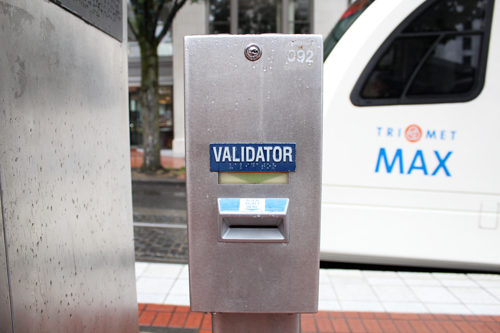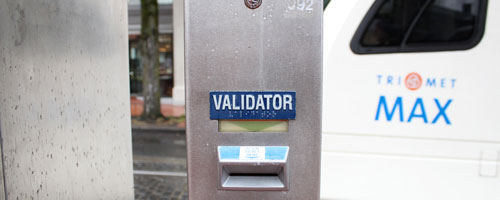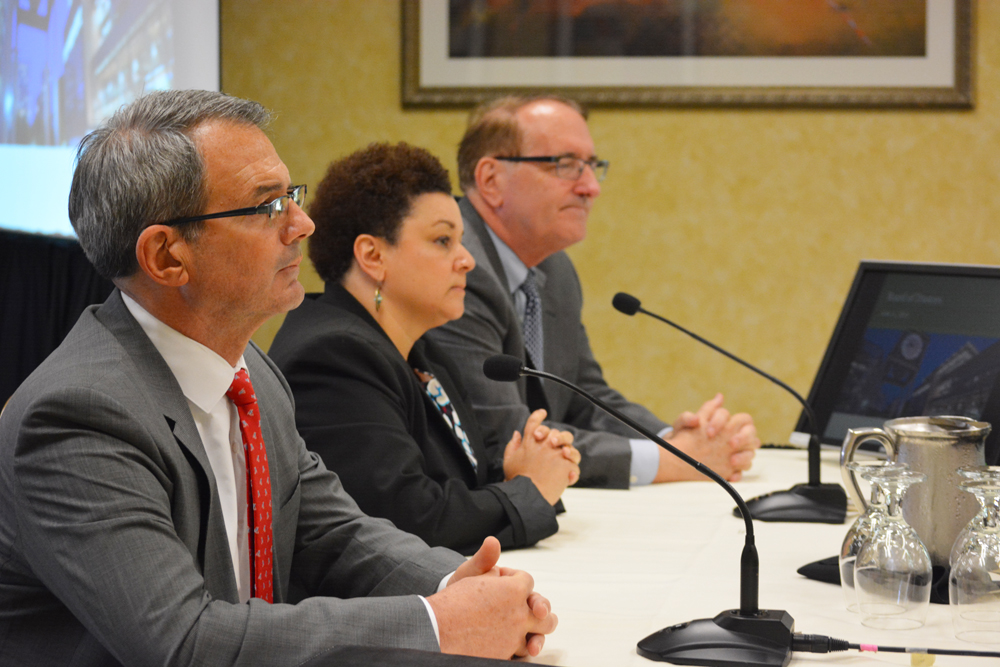News came down in June that TriMet’s board had finalized a plan to close a sizable budget gap with fare hikes, service cuts and a death warrant for the Free Rail Zone. Since announcing its intentions earlier this year, TriMet has suffered Portlanders’ contempt and overwhelming disapproval of the agency’s proposals.
The beginning of the end
Editor’s note: This story is a revised version of an opinion column that originally appeared on the Vanguard website Wednesday, August 8.
News came down in June that TriMet’s board had finalized a plan to close a sizable budget gap with fare hikes, service cuts and a death warrant for the Free Rail Zone. TriMet’s proposal ignited citywide contempt and overwhelming disapproval, causing the agency to retract some components of their original plan, like the one-way fare idea, but in order to make ends meet, something had to give.

The Free Rail Zone has been living on borrowed time for years. Since moving here six years ago I’ve learned to think of the Free Rail Zone (then known as Fareless Square because buses were also free within its boundaries) as ephemeral. What seemed a brilliant way to make Portland’s city center appear one small inviting neighborhood has been in the crosshairs for years.
The fare increase in question will, for many riders, be steep. According to its website, TriMet fares usually increase by a nickel annually “for inflation.” As of Sept. 1, riders accustomed to paying $2.10 will pay $2.50 to board the city’s buses and trains. If it helps, think of this as eight years of incremental inflationary hikes overnight. Many Portlanders who depend on public transit will soon pay more than what New Yorkers pay for a Metro Card.
Alas, there’s no money. Budgets everywhere are tightly strapped; the brains at TriMet seemed unable to imagine a solution without some ratio of fare hike to service cut. The agency blames the stammering economy, lower-than-expected tax revenue and—without subtlety—the Amalgamated Transit Union’s costly labor contract.
TriMet’s board, though, is confident that such radical adjustments (i.e., rubbing out the Free Rail Zone and raising ticket prices while cutting services, coupled with some administrative sacrifices) will patch the $12 million hole. But how long will it hold? And what happens then?
These questions surface because something is suspiciously absent from TriMet’s plan: a real solution.
Forget for a moment that the board’s answer to the agency’s money troubles is sure to pour grit into the gears of the local economy, further bury the city’s poor and clog the city’s roadways with more private automobiles. Even more alarming is that it fails to address the root of the problem. If anything, it threatens to exacerbate it.
The increased fare is certain to push riders away. Some will rely more heavily on their cars; others will dust off their bicycles. TriMet’s board knows this, and anticipates that the fare hike will cost them 1.1 million riders. They’ll be lucky if the number is so small.
By erecting higher obstacles to riding the buses and trains, their plan threatens to backfire even as a stopgap measure. According to researcher David Olsen, who has written extensively on public transit, every 10 percent fare increase pushes ridership down nearly 4 percent.
If Olsen is correct, TriMet can expect the upcoming fare hike to cost them well over their projected losses. According to Olsen’s math, TriMet, who reported selling 100 million tickets last year, will lose closer to 10 million riders.
Even if their plan plugs the budget gap in the short run, coupling service cuts with fare hikes de-incentivizes riding our trains and buses. As ridership falls, public transportation becomes more wasteful.
The agency’s decision to erect higher barriers of entrance to the city’s trains and buses is a suicidal leap in the wrong direction.
This cash-strapped city is pushing people away from public transit when it would be more beneficial to usher a greater number of people onto its buses and trains.
TriMet’s plan is, however, the least difficult politically. It’s also the least creative, and dooms us to future rounds of austerity measures each year until the economy picks up or some other such miracle occurs. City officials have selected a circular course leading to future budget shortages and, in so doing, have condemned us to the same handwringing debate next year.
What choices exist for a city that values fresh air and frets over the size of its carbon footprint? In a city with nearly a dozen bridges and not a single tollbooth, diverting monies that subsidize use of the private car into our public transit system was never seriously considered.
The upcoming fare hike will hurt the many thousands dependent on the city’s buses and rail lines more than it will me. TriMet found my willingness-to-pay threshold a few years ago when fares crept over $2. I will miss the Free Rail Zone as a symbol of Portland’s dedication to equity. Devastation looms thanks to the myopic problem-solving talents of our city officials.
At a critical moment for the agency’s future, TriMet punted. Non-solutions like the one approved undermine TriMet’s purpose and future.







Wonderful and insightful article. The only flaw: TriMet is not a city agency. The Board is appointed by the Governor and has no local oversight. They used to get real public input but found that the public was strongly opposed to their ‘solutions’ thus they greatly reduced the ability for public input to have any meaningful change.
If TriMet were really to work to help the people of Metro they would start by revamping the entire map. There are currently no express busses between Transit Centers, there are no local area buses. Many of the routes are very long and make little sense, nearly everything is routed through downtown Portland but there is no central location to make immediate transfers. Passengers must often wait extensive periods of times between busses, there is no consideration for businesses that lie outside the City Center and there is absolutely no thought to late night employees. TriMet appears horribly mismanaged with no deemable oversight. As a corporation it would be considered a failure from where it was in the 90s and the very early 00s. And this is truly a shame.
Again, thank you for a wonderful article and I hope more of our fellow students and the community at large will become at least more aware if not more involved.